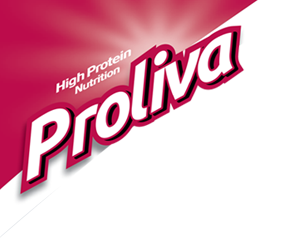-
What Is Complete Protein? – Health
11.04.2018If you’re a big fan of quinoa, or chia seeds, you may have heard them touted as complete proteins. In a nutshell, that means they contain all of the nine essential amino acids required to build and repair protein tissues in the body. But the question is: does that matter?
The short answer is no, not really. But first, let’s back up a step.
Animal-based foods like eggs, dairy, fish, and meat are complete proteins; while most plant foods are incomplete—meaning certain amino acids are missing from the protein puzzle.
Some people believe that in order to utilize plant protein efficiently, you must eat so-called “complimentary proteins” together. Rice and beans are a good example of complimentary proteins, because the amino acids that are missing from beans are found in rice and vice versa.
However, according to the Academy of Nutrition and Dietetics, the terms “complete protein” and “incomplete protein” are misleading. That’s because if a person consumes enough calories from a healthful, varied diet—even if those calories come exclusively from plant-based foods—she should get an adequate supply of essential amino acids within a 24-hour period.
Your liver helps by storing various essential amino acids over the course of a day for use later on. In other words, you don’t need to worry about eating complimentary plant foods simultaneously, as long as you’re eating a variety of nutritious foods (and not just vegan junk food).
Ready to ditch added sugar? Sign up for our 14-Day Sugar Detox Challenge!
So no, you don’t need to eat quinoa or chia at every meal; or memorize lists of foods to pair. But if you are vegan or lean toward a plant-based diet, to meet your protein needs by the end of the day it’s important to eat quality calories from a mix of whole foods. Here are some examples of snacks and mini-meals that can help you consume a broad spectrum of the nutrients and amino acids your body needs:
Add veggies, like shredded zucchini or finely chopped kale and fresh fruit to oats, and garnish generously with nuts and/or seeds.
Layer cooked, chilled quinoa and hummus and scoop it up with raw veggies.
Whip up energy balls made from nut butter or sunflower seed butter, mixed with rolled oats or toasted quinoa and dried fruit, rolled in chia seeds.
Add black beans and cooked, chilled wild rice to garden salads.
Toss buckwheat soba noodles with veggies, black eyed peas, and a sauce made from almond butter seasoned with ginger, garlic, and chili pepper.
Garnish lentil and veggie soup with chopped walnuts or pecans.
Whip chickpea flour into fruit and veggie smoothies along with sprouted pumpkin seeds.
Drizzle oven roasted veggies with tahini or serve with pesto made from olive oil, herbs, and nuts.And remember that if you eat animals foods, quality still counts for wellness, weight management, and disease prevention. Pair pastured eggs, grass-fed dairy or beef, organic poultry, and wild, sustainable seafood with plenty of plants. And keep in mind that you don’t need to eat animal protein at every meal in order to consume an amino acid-rich diet.
Source: What Is Complete Protein? – Health
Latest Blog Post
- Sugary Drinks Linked to a Higher Cancer Risk
- The Latest Research on Protein and Muscle-Building
- 27 Health and Nutrition Tips That Are Actually Evidence-Based
- Tall order: More to good growth in toddlers than just measurements
- Millions of cardiovascular deaths attributed to not eating enough fruits and vegetables

